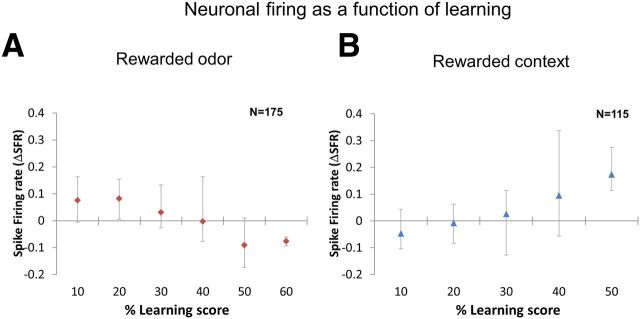Figure 8.
Change in neuronal responses toward rewarded odors and contexts as a function of learning. A, We grouped data based on learning scores (percentage PER in differential odor and context-dependent learning or percentage partial and percentage complete reversals in reversal learning) toward rewarded odors. We looked at corresponding change in neuronal responses after odor onset and found that learning and ΔSFR were negatively correlated (Pearson's correlation coefficient, R2 = 0.89), i.e., with increase in learning the firing rate decreased. B, Similarly for the contexts, based on learning scores toward the odors (percentage PER in context-dependent learning or percentage partial and percentage complete reversals in reversal learning), we grouped the data and looked at corresponding firing rates after context onset. We found a positive correlation (R2 = 0.96) between learning and firing rate, i.e., with increase in learning firing rate also increased. The ordinate gives the average ΔSFR for each group of learning score. The bottom and top error bars represent minimum and maximum values, respectively.

